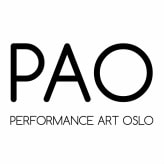Interview with Tania García
 "Colonizando", 2016
"Colonizando", 2016
Santa Cruz de Tenerife, 10.10.2016
Q: Why / when / how did you start to work with performance, what is your background, how did you arrive at doing performance?
My adolescence was marked by small jaunts in theatre which filled me with life. That wooden floor, the scenarios and the staging captivated me, but I ended up being disenchanted by the text, the dialogue and the foreseeable development of the plot which blocked me…Finally I was more interested in Fine Art because this seemed familiar and allowed me to be myself.
During the fourth year of my Fine Arts degree, I was granted with the Seneca scholarship at the Polytechnic University of Valencia. At this time I was specializing in sculpture and the name of an elective course: "Sculpture as behavior", caught my attention in such a way that I had no choice but to sign up. To my surprise, I met a close and charismatic performance teacher named Bartolomé Ferrando who brought out the best in every student. He was one of those teachers that mark you for good and for life. Thanks to Ferrando, I went back to the body and the scenic in a very different way, in a more personal way where you can mix up different disciplines.
Q: What is your process like when you make a performance, from idea to actual work?
In my case the creative process does not have a rigid or repetitive structure, but often the steps get interlaced. However, the idea appears once I have seen the space where I will do the action as my work particularly revolves around the space where the subject lives and moves.
The space provides me the knowledge about how I will move within it, but it also gives me an idea about the kind of relationships that I will be able to establish with the viewer and with the objects I will use.
Q: Can you tell about your latest project?
My latest work is closer to a happening, where I explore the limits of my “no” action and how that activates viewers.
Q: With what kind of form / material do you express yourself and use in your work and how did you arrive at using this material?
The body and it’s natural movement without tricks is an essential part, but it does not play a leading role. In my actions the body works as a tool- as a part which moves the real protagonists which are the objects and spectators. Normally I use things from daily life which are around me, objects with a charge of universal and personal meaning that allow me to travel through time- a sensitive and emotional journey. The things I use arise unconsciously or by means of a conceptual relationship and they tell more than what my body or my words could tell. They stand for experiences and/or parts of my own body.
Things like mattresses, pillows, books, bags, packing tape, plastic bags, needles, thread, nails and hammers seem to be the most recurring objects.
Q: How do you experience or consider the audience / surrounding? How does your surrounding influence your work? Do you involve the public? If so,how?
I created very personal and individual performances where sensorial experimentation was my purpose and therefore it involved the spectators. In my latest projects, the key piece is the involvement of the viewer. I turn this into one more element of what is happening, so the spectator takes over the space and does the action. This gives room to curious moments for me and the audience and it increases the opportunities for failure- a complete failure if the audience is not interested in taking part, but this is the risk of experimentation...in doing experiments you have to consider failure as a possible result.
Q: What space / surrounding do you find interesting to work in?
I am interested in all spaces: classrooms, museums, public spaces, restaurants, bathrooms. Any space seems to have the same importance to me as well as any audience.
<< Back
